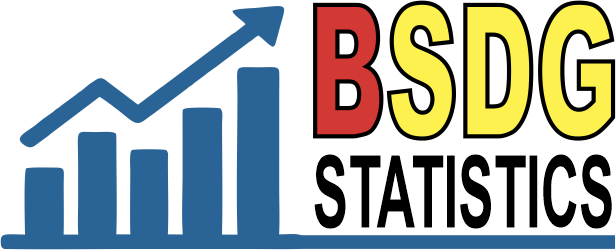KARAKTERISTIK ENDAPAN LATERIT NIKEL DAN UNSUR TANAH JARANG DI DAERAH PULAU GEBE, HALMAHERA TENGAH, MALUKU UTARA
CHARACTERISTICS OF NICKEL LATERITE DEPOSITS AND RARE EARTH ELEMENTS IN GEBE ISLAND, CENTRAL HALMAHERA, NORTH MALUKU
Abstract
Nickel laterite is a product of weathering of ultramafic rocks that have an abundance of olivine and orthopyroxene minerals. Geology in the Gebe Island, Central Halmahera Regency, North Maluku Province is composed of limestone, which is equivalent to the Waigeo Formation which has an inconsistent relationship with the underlying ultramafic rocks as carriers of laterite nickel deposits. Weathering of ultramafic rocks produces a different profile and character of laterite nickel. This study aims to determine the characteristics of laterite and rocks from the area and to determine the characteristics of rare earth elements. Based on the results of the study, it is known that laterite nickel carriers in the area are dunite. Laterite nickel deposit profile on the island consists of red limonite, yellow limonite, and saprolite. The red limonite zone is characterized by a relatively high Fe2O3 content and a strong degree of lateritization; the yellow limonite zone is characterized by a relatively high Al2O3 content and a weak to strong lateritization degree; the saprolite zone is characterized by a relatively high MgO and SiO2 content. In general, laterite Ni deposits in the study area show relative enrichment of REE to bedrock and LREE content is more abundant than HREE content. Based on the spearman correlation, the main controller of LREE(La-Eu) and HREE(Gd-Lu) enrichment is Fe mineral with the spearman coefficient value between LREE(La-Eu) and HREE(Gd-Lu) with Fe2O3 is 0,64-0,83. While the main controller of Sc enrichment is Al mineral with the spearman coefficient value between Sc and Al2O3 being 0,59.
Downloads
References
Aiglsperger, T., J. A.Proenza,.J., F.Lewis, , M.Labrador, M.Svojtka, , Rojas-Puron, A., F.Longo,. dan J. Durisova, (2015). Critical metals (REE, Sc, PGE) in Ni laterites from Cuba and the Dominican Republic. Ore Geology Reviews, 73, 127-147.
Aleva, G. J. J. (1994): Laterites: concepts, geology, morphology and chemistry. International Soil Reference and Information Centre (ISRIC).
Butt, C. R., danD. Cluzel, (2013): Nickel laterite ore deposits: weathered serpentinites. Elements, 9(2), 123-128.
Brahmantyo, B., dan B.Salim, (2006): Klasifikasi Bentuk Muka Bumi (Landform) untuk Pemetaan Geomorfologi pada Skala 1: 25.000 dan Aplikasinya untuk Penataan Ruang, Jurnal Geoaplika, 1, 071-078.
Elias, M. (2002): Nickel laterite deposits-geological overview, resources, and exploitation, Giant ore deposits: Characteristics, genesis, and exploration. CODES Special Publication, 4, 205-220.
Robb, L. (2005): Introduction to Ore Forming Processes, UK: Blackwell Publishing.
Schellmann, W. (1986): A new definition of laterite, Memoirs of the Geological Survey of India, 120, 1-7.
Sulaeman, H., M., H.Wicaksono, , R., S.Nugraha,F.Firmansyah.., dan A.Suparmin, (2020): Prospeksi Nikel dan Mineral Pengikutnya di Pulau Gebe, Kabupaten Halmahera Tengah, Maluku Utara. Pusat Sumber Daya Mineral Batubara dan Panas Bumi
Supriatna, S., A. S. Hakim, dan T. Apandi, (1995): Peta Geologi Lembar Waigeo, Irian Jaya. Badan Geologi.
van Bemmelen, R. W. (1949): The Geology of Indonesia, Vol I-A, General Geology, Government Print, The Hague Netherland.
Copyright (c) 2022 Buletin Sumber Daya Geologi

This work is licensed under a Creative Commons Attribution-NonCommercial-ShareAlike 4.0 International License.
Authors whose manuscripts are published agree to the following terms:
The publication rights of all journal manuscript materials published on the Buletin Sumber Daya Geologi website are held by the editorial board with the knowledge of the author (moral rights remain with the manuscript’s author).
The formal legal provisions for access to digital articles in this electronic journal are subject to the terms of the Creative Commons Attribution-ShareAlike (CC BY-SA) license. This means that Buletin Sumber Daya Geologi has the right to store, convert media/formats, manage in the form of a database, maintain, and publish the article without requesting permission from the author, as long as the author’s name is cited as the copyright holder.
Manuscripts published in both print and electronic formats are open access for educational, research, investigative, and library purposes. Beyond these purposes, the editorial board is not responsible for any violations of copyright law.















